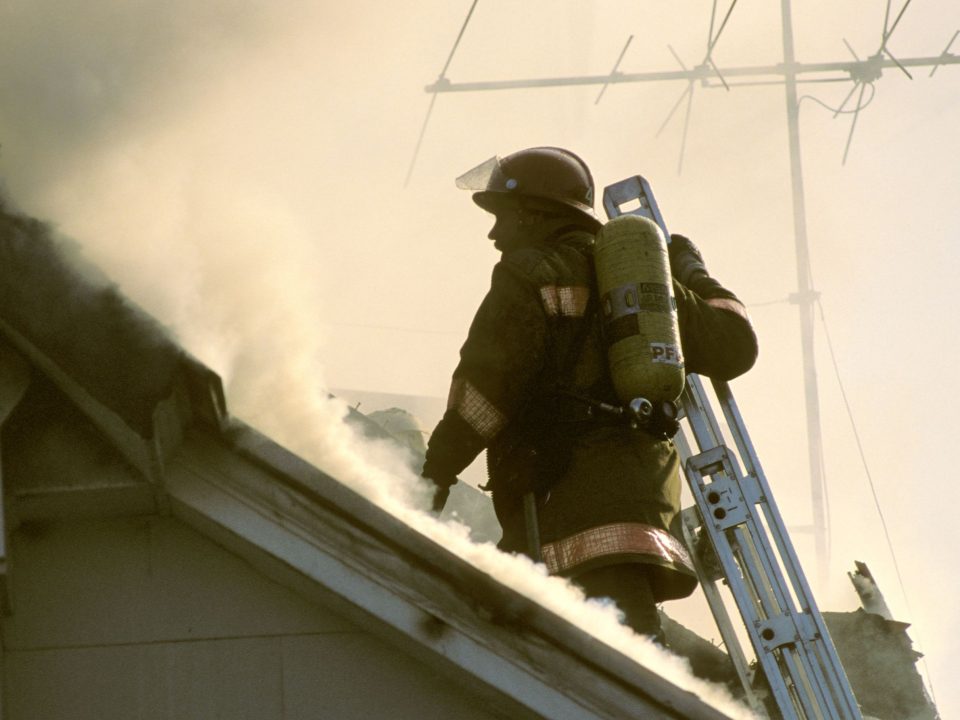How to Tell if Your Shingles are Fireproof
You should count on the roof over your head to protect you from more than just rain.
Opting for fireproof roofs provides an invaluable defense against devastating fires, potentially safeguarding your property and loved ones.
These specialized roofs not only ward off spreading fires but can also contain them more effectively. Yet, it’s crucial to note that not every shingle on the market is designed with this protection in mind.
In our guide, we’ll explore the intricacies of fire-resistant roofing and offer insights on discerning whether your existing shingles meet the fireproof standard.
Fire Resistance Rating for Shingled Roofs
Roofing materials are rated for fire resistance based on the following classifications:
- Class A: This shingle provides the highest fire protection for your roof deck. When choosing an asphalt shingle, going for the Class A shingles is essential. Other roofing materials considered Class include clay, concrete, slate, and metal.
- Class B: This rating provides moderate fire protection and includes treated wood shakes and shingles.
- Class C: This is the lowest rating, providing limited fire protection and includes untreated shingles such as wood shakes and some types of asphalt shingles.
When selecting a roofing contractor, always choose a roofing contractor offering Class A shingles to protect your home from fire.
Inorganic vs. Organic Shingles
Asphalt roofing shingles have either organic or inorganic base materials.
Organic shingles have paper or fiberglass bases, while inorganic shingles use ceramic or stone. Although both are fire-resistant, inorganic asphalt roofing shingles offer superior fireproofing. The ceramic or stone base makes them less susceptible to high temperatures than the fiberglass or paper in organic asphalt roofing shingles.
Also, they have a higher melting point, so they will not melt in the event of a fire like organic shingles.
Manufacturer’s Warranty
In most cases, shingle manufacturers offer a limited warranty. Check the contract to see if it includes fire resistance in the warranty or Manufacturer’s Specifications.
Other Factors for Shingles
Fire resistance is only one of the considerations when choosing shingles for your safety.
A Class A fire rating is excellent for peace of mind, but you want your shingles to withstand other issues that might pose more of a threat than fire. Mother Nature is powerful and can be damaging to your roof throughout the year. For example, high winds can pose an issue in Chicago, so finding a shingle that can withstand at least 130 mph is a must.
The weather in Chicago can also lead to algae growth on some roofs, so finding asphalt shingles with copper-lined granules to resist algae growth will help. Black algae is the most common in the Chicago area, causing shingle discoloration. It tends to set in after about 10 years when asphalt shingles containing lime start to break down.
Of course, water is also a concern. Although most roofing materials are designed to provide water tightness, wood shaker shingles are the most prone to water damage. Last but not least, sun damage can penetrate shingle materials and damage the roof’s integrity. Choosing a shingle material that can withstand the penetrating UV rays of the sun will provide that final level of protection for a longer-lasting roof that also withstands the threat of fire.
Choosing a roof with fireproof shingles provides protection against heat and fire. However, you want to ensure your shingles also stand up to the elements, which tend to pose the greatest threat to your safety over the life of your home.
The Len Roofing & Remodeling Difference
When we say that we’re a top-quality home remodeling and roofing company that serves the North Shore and surrounding Chicagoland area, we back it up. We do more than simply cover the basics: we show up on time and nail it. For more information or to schedule a consultation, call 847-768-6000 or visit our contact page.




